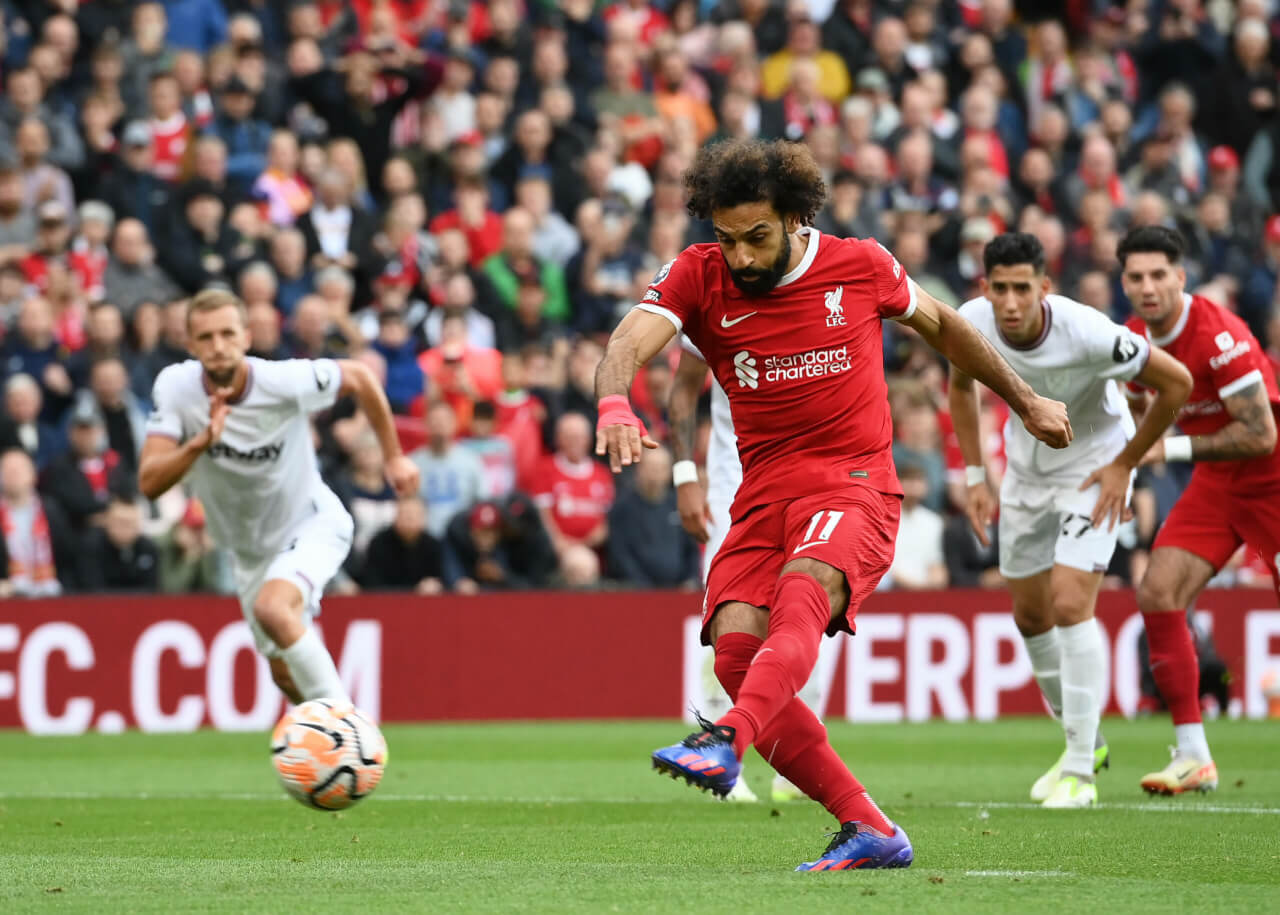Deep Dive into Stats against West Ham
Liverpool’s journey in the Premier League has been a subject of extensive analysis and discussion. In a detailed conversation between Simon Brundish, Phil Barter, and Dan Kennett from Anfield Index, the trio delves deep into the stats and strategies that unfolded during Liverpool’s games against Lask and West Ham.
Liverpool, in the Europa League, showcased possession of 66% with 13 shots and multiple high quality chances, reflecting a seemingly dominant performance against Lask. However, the match was more even, especially in the first half, with both teams having their moments. The penalty was crucial for Nunez, allowing Liverpool to hit the back of the net and gain momentum.
West Ham’s Counter-Attack Approach:
West Ham’s game plan primarily revolved around counter-attacks. The team, with Antonio leading the front, focused on quick play and quality crosses into the box. The team’s structure and passing chains were notably concise, emphasizing swift transitions and exploiting spaces, especially in Liverpool’s left-back zone.
The midfield selection for Liverpool appeared well-balanced and dynamic, with players like Gomez and Matip strategically positioned to counter West Ham’s aerial threats. The midfield was instrumental in retaining possession and providing a solid platform for building attacks throughout the season.
Mo Salah’s Long-Awaited Penalty:
Mo Salah finally securing a penalty was a significant moment, breaking a streak of 83 games and 551 penalty box touches without winning one. This achievement was a testament to Salah’s persistence and skill, highlighting the discrepancies in foul attributions compared to other players like Jack Grealish and Harry Kane.

Analyzing Big Chances:
The match saw several big chances from both teams, with West Ham capitalising on spaces and creating free headers. Liverpool, on the other hand, managed to outperform with Ali showcasing brilliant saves and contributing to the overall stability of the team.
The Impact of Tactical Adjustments:
Liverpool’s initial strategy involved a conservative approach, focusing on possession control and minimising risks. However, tactical adjustments were made to address the instability and threats posed by West Ham, leading to a more cohesive and structured gameplay post-penalty.
Delving into Expected Threat (xT): A New Perspective in Football Analysis
In the evolving landscape of football analysis, the concept of Expected Threat (xT) has emerged as a pivotal metric, offering a nuanced understanding of a team’s offensive and defensive dynamics. Simon Brundish, Phil Barter, and Dan Kennett, in their detailed conversation, touched upon the significance of xT in evaluating team performances, particularly focusing on Liverpool and West Ham’s strategies and gameplay.
Latest pod on West Ham with the end section powered by the brilliant @markrstats and his essential website data source for Expected Threat (xT) https://t.co/5dALrNA4r3 https://t.co/M0yVmbfP6H
— AIUnderPressure (@AIUnderPressure) September 27, 2023
Understanding Expected Threat (xT):
Expected Threat (xT) is a sophisticated metric that quantifies the potential threat or opportunity created by a player’s actions on the field. It evaluates the likelihood of a team scoring from a particular position, considering various factors such as player positioning, defensive structures, and ball movement. This metric provides a comprehensive view of a player’s contribution to building attacks and creating scoring opportunities, going beyond traditional stats like assists and goals.
If we accept that the overall quality of teams is best measured by XG Difference, then there is a significant, positive relationship (p <0.02, r=0.7) between XG Diff and XG-XT
Higher quality teams typically have XG slightly higher than XT with the opposite for low quality teams. pic.twitter.com/EYXzavb56X— AIUnderPressure (@AIUnderPressure) September 27, 2023
xT in Liverpool vs West Ham:
Analyzing the match between Liverpool and West Ham through the lens of xT provides insights into the tactical approaches and effectiveness of both teams. Liverpool, known for its dominant and well-structured gameplay, leveraged its midfield dynamics and possession control to create substantial threats. The strategic positioning and movements of players like Gomez and Matip were crucial in countering West Ham’s aerial prowess and quick transitions.
West Ham, on the other hand, focused on exploiting spaces and executing swift counter-attacks. The team’s concise passing chains and emphasis on quality crosses into the box were reflective of a strategy aimed at maximizing threat in key areas. The utilization of spaces and creation of free headers during big chances highlighted the team’s approach to optimizing expected threat levels.
Evaluating Player Contributions:
The concept of xT allows for a granular evaluation of individual player contributions to the team’s offensive endeavors. For instance, Mo Salah’s persistence and skill in securing a long-awaited penalty can be assessed in terms of the increased threat and scoring probability it brought to Liverpool. Similarly, the roles of Antonio and Bowen in leading West Ham’s front and delivering quality balls can be analyzed to understand their impact on the team’s overall threat levels.
Strategic Implications of xT:
The application of xT in match analysis enables teams to devise informed and effective strategies. By understanding the areas of high expected threat and identifying the players contributing to it, teams can optimize their formations, player movements, and ball distributions to enhance their offensive output. Additionally, insights derived from xT can aid in making tactical adjustments to counter the opponent’s threat levels and mitigate vulnerabilities in defensive structures.
Conclusion:
The in-depth analysis by Simon Brundish, Phil Barter, and Dan Kennett provides valuable insights into the tactical nuances and statistical elements of Liverpool’s game against West Ham. The discussion sheds light on the strategic adjustments, player performances, and key moments that defined the match, offering a comprehensive view of Liverpool’s journey under pressure in the Premier League.




